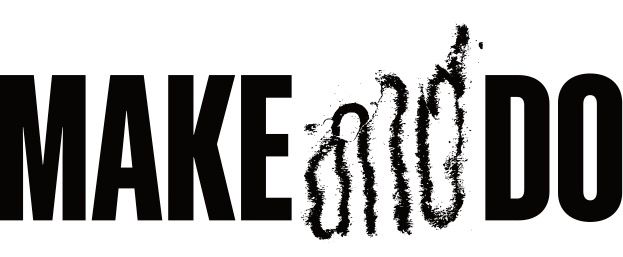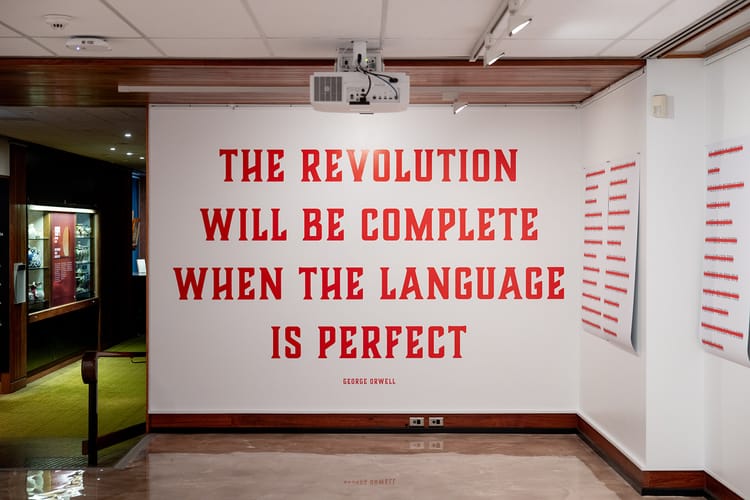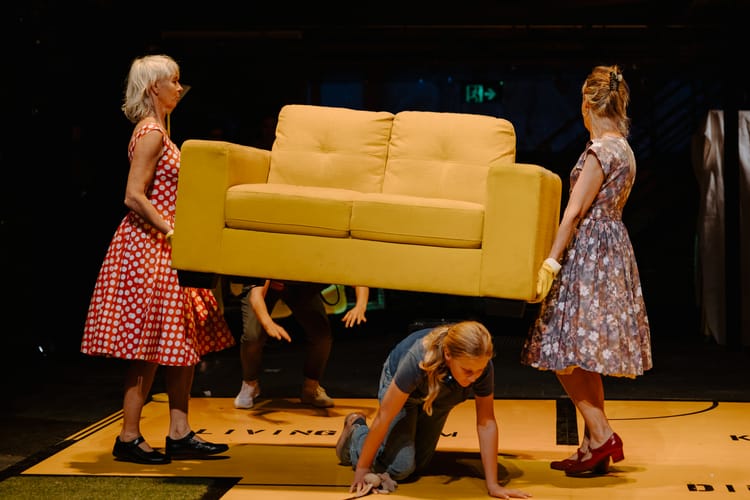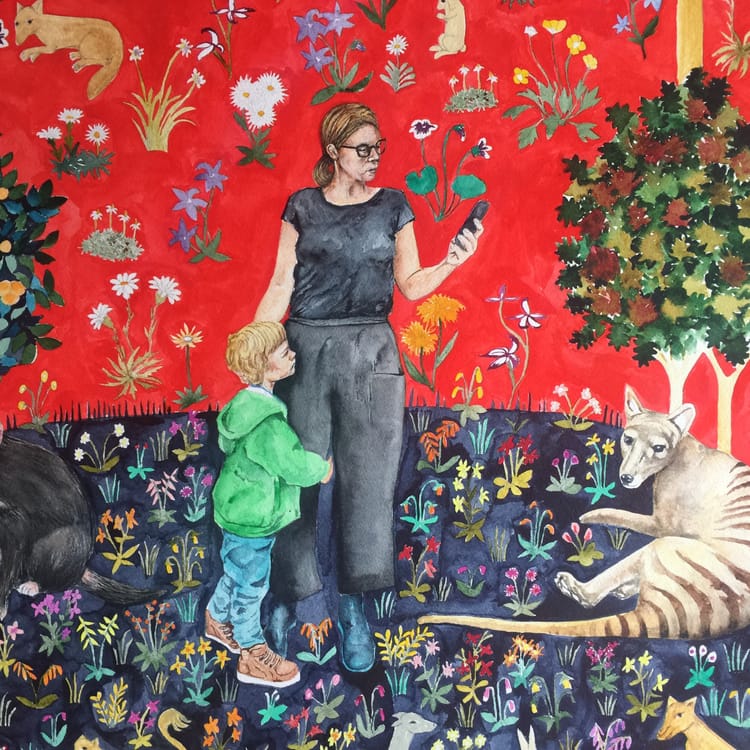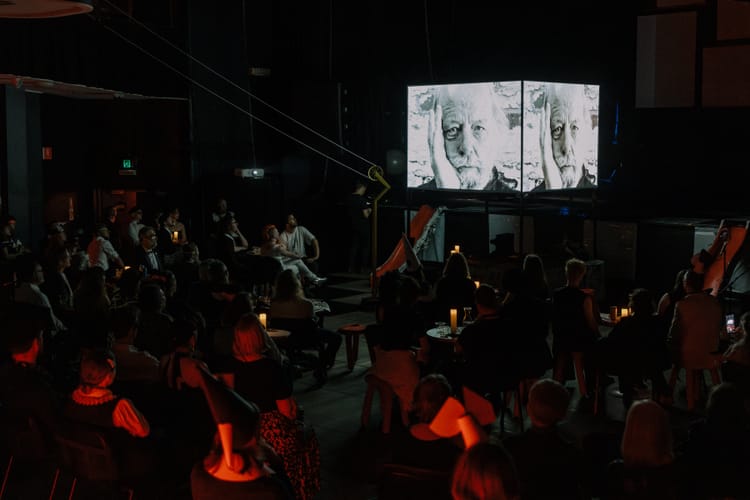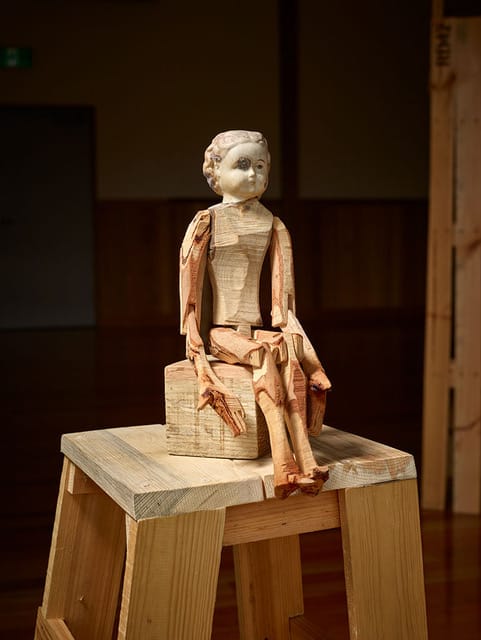Some art I have been thinking a lot about and it kind of delayed me because I was thinking too much and I just could not let go - July/August 2024
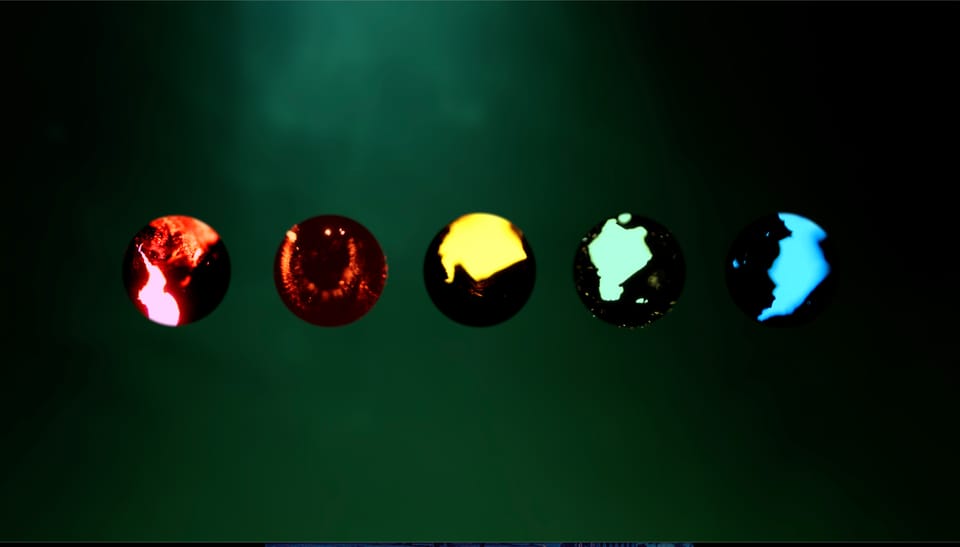
TIME-BASED: NOTES ON SPHERES SCAPES AND GRAINS OF FORMATIVE KNOWLEDGE
Matt Warren
Good Grief
I’ve had the interesting pleasure of really following Matt Warren’s career as an artist, and if you’ve been following my writing, you know that following a career is something I really prize in how I engage with art at all. I’ve been thinking about why this, recently, and my moment of revelation where my critical engagement gland releases the excited dopamine of interior vision splunged into my head, and lo, I am fascinated by a continuum.
I think Matt Warren could be the artist I’ve been able to pay the most attention to for the longest. I’ve screened experimental films of his, curated his band into events and observed his art over... Well, I’d say decades. I have even had the pleasure of collaborating with the gentleman.
I really like his entire artistic output, but I think it got hugely better in the last maybe eight years, when he seemed to shift into this raw, deeply personal territory, although it’s also true to say Matt’s work has always had a strong personal flavour. Nonetheless, Matt’s work has really come into its own more recently; he even found a way to make and share art during the pandemic, when he was personally tested to an extreme limit by loss. Matt made art around that, and it was dynamic, bold, heartbreaking, vulnerable and courageous – his work Some Kind Of Return remains for me one of the richest works made here in Lutruwita/Tasmania in at least the last five years if you’re me.
This new exhibition was more of a collection, and it was made to sit in a gallery space and be experienced as an exhibition. Matt seems to work to the space his art ends up in very well; it’s quite striking how much I think of his work as being in a particular room. When I recall this show, I recall how it was staged, how it looked in situ, and that’s very much part of the work for me. I think this is due to, in part, Matt often using light and sound as materials – but it’s also because he seems to think about rooms and how people will encounter his work. The big thing though, is the use of still images. This is somewhat unusual, although Matt has used them before. Here though, the images are digital prints harvested with some care from a series of film sources – found super 8 film, more super 8 film shot by Matt some thirty years ago.
These images are quietly incredible fragments of greater fragments, sifted and used after a long period marinating. I find myself intensely drawn to this process of having something, wondering for years what to do with it, or just waiting for the right moment, and then, finally finding an answer. Finding something that works, finding something to use: the waiting paid off, the moment came.
The images are hard to ‘decipher’ but that may not be the real point – they come across more as sliced time, abstracted by stillness and temporal distance. There’s something intrinsically odd as well about the mediums being referenced; Matt calls some works ‘third or fourth generation bootlegs of forbidden films’ – and this is potent. It conjures up an era of copying and sharing things. It used to be the case that you could get two video cassette players and copy a film; this was a very normal activity, and it was how some films that were hard to find circulated. It also leans to into underground mythology about ‘banned’ films – and Australia has had plenty of those, and still does. What’s interesting here is that something interesting happens when you make a copy of a copy of a copy – there’s degradation, but that degradation is visually interesting, and it’s what Matt has latched onto here – and he’s right, it makes for arresting imagery and it suggests something – as everything here does – about the passage of time and the idea of waiting. That’s something unusual for art making – letting something marinate over years. You have this thing, and over decades it does not change, but you do, and how you see it alters. It’s particularly true of what we might call outdated media – and there’s actually a lot of outdated media, now. Hinted at in these works are all the things we used to record our lives, the way we consumed film and music and art, and how these things get superseded – or even never take off – and yet the information, the images, remain. The copies of copies that edged into our consciousness , our understanding. I’m sure this still exists, and I’m personally very resistant to nostalgia as a force, but I don’t think this is nostalgic – Matt is looking at the decay itself, at the passage of time and underneath it, how we remember our lives and what that means.
Matt’s art possibly uses memory and time more than any other thing – and yet it is not about eulogising or lionising the past as a better place. Matt’s work conjures memory as a way to see where we are right now – where we have come from, and perhaps, by implication, where we might be going next.
It’s important as well that Matt uses ‘obsolete’ sources as material, making something new from them. Sifting through detritus and finding the wonder is a very strong technique that has much relevance in our current world of stuff – there’s something that questions consumption in this tactic, and I see a number of artists doing this currently in some way, obviously and not so obviously. Matt has a strong aesthetic that is derived from his usage and manipulation of media, and it’s one I really respond to – these beautiful fragments are transformed into singular objects, whilst still implying a greater whole.
I kind of loved this. I managed to slip in twice, because I just wanted to see the work again, and because it was different to anything I’d seen from Matt before, and it also wasn’t. I recall John Peel’s comment about The Fall: always the same, always different. That’s about right. Matt Warren remains distinct, he is still following his ideas in art, and he allows them be themselves. It’s just really good stuff, and it keeps getting better.
SLEEPWALKERS
Jillian Farmer, Christel Berg, Chantale Derule, Tamzen Brewster, Jacob Leary, Sharyn Woods, Ann Medlock, Denis Pybus, Jo Chew
Moonah Arts Centre
Until 17th August
I hate bagging artists and art out.
I know lots of artists. There a lot of them whose work I don’t actually dig all that much. This does not, and has never, meant that I think it’s ‘bad art’ – that’s something else altogether. There’s bad art as well, but that is quite different from art that doesn’t sit in my very narrow range of art that actually appeals to me that is still well constructed, thoughtful, interesting, beautiful art. I have an issue, in point of fact, with the notion of Beautiful Art, but that does not mean I think it’s poor art, it means I have an intellectual or aesthetic problem. That is, quite literally, my problem.
I like to say in these cases that the art is, well, not for me.
I also know that artists work really hard (well, for the most part). There are artists whose work is not for me who approach art making with rigour and commitment, and I can see they do. I can respect this, and I do. If something is not for me, I am still able to recognise it as having excellent intent, or genuine commitment. A tremendous amount of landscape art is a bit like that for me. I definitely do find some landscape art personally exciting, but the bulk of it is Not For Me. I also get that this art sells, and I can’t tell anyone what to do; I can only react to the art I encounter.
I recognise the work and the commitment and the skill. I recognise the long hours spent honing a talent, and the self-doubt, and all the things that are part of being an artist.
But there are problems sometimes, and the show Sleepwalkers at MAC right now is a show that I have found problematic.
This does not mean it is a poor show.
Let me explain, if you will. Grant me your indulgence.
Sleepwalkers has in it some artists that I really enjoy on a personal level. I love the haunted, emotionally rich work of Sally Rees; I think Jo Chew is an excellent artist and really crucial in the current strata of art, because she brings a genuine kind of activism into her output[1], and I think Jacob Leary is genuinely contemporary, serving up a kind of spectacular post-Ballardian art of chaos and transformation.
Everyone else in this show is pretty great as well: Christl Berg is someone I recognise as a deeply under rated artist locally, who produces superb creative work whenever I see something from her. Seriously, Berg is one of the best artists we have; this most recent outing for her shored that up for me.
But, but, BUT, I have an issue with Sleepwalkers. It’s the premise of the show.
It’s a complex problem that I have though as in some ways, I want to see a show that is attempting to do what Sleepwalkers does. In a larger sense, an art exhibition that is attempting to talk about...
Well this is part of my issue, actually – what is Sleepwalkers attempting to talk about?
The overall feeling of a troubling and uncertain future and how it is being dealt with, or not, is actually crucial. While I do not expect every artist to tackle this – I do not require artists to do anything – it’s important that it comes up and that artists and more importantly, curatorial entities and institutions, create spaces and dialogues about contemporary issues, and well, there’s plenty of those. There’s a lot of those. It’s overwhelming, really.
This is what Sleepwalkers is sort of attempting to create comment on: the overwhelm. The paralysing reaction of existential horror that almost acts as if hands have been placed over ears and eyes are twisted shut and sort of mumbling nononononononononononononononononononono. I think the exhibition is saying this is a problem.
Uhm. Well yeah. It is, true.
This is not the first time I’ve heard that said, or read it or had it noted in a film, or even, you know, symbolised in art. In real terms, I think I can reasonably say this occurs with some regularity in cultural criticisms and discussions, and that in fact, I have reached a point where I find saying this is a bit smug.
The issue is that this observation is more of a starting point than an a grand revelation.
If this is what Sleepwalkers is doing...
Another point is – I’m not sure. I’m not sure if this is exactly what Sleepwalkers is doing. I’ve read the writing in the catalogue, I saw the show get installed, and I’ve talked to a couple of the artists, and the curatorial team, and I cannot quite nail it down, unless it is just about the overwhelm and how people are finding it hard to act. I have to note I found it a bit scattershot, and this is due to the overall nature of the thematic premise – the future is very large – but it points to an issue with the show as well: it is trying to cover too much ground and it stumbles as a result.
The future is really big, but so is right now. In the right now, I have to note that I see protest movements, symbolic actions, powerful art and some really crucial books being written (I suggest you read How To Blow Up A Pipeline by Andreas Malm, and go from there). But my point would be that I do not think that the whole population is walking blind to an abyss going "la la la la". I’d go so far as to say that what we are experiencing and noticing in the Global North right now has been experienced and noticed by Global South for decades, and that Global South has been sounding an alarm for quite some time, and that really, Global North has been near-wilfully ignoring them.
I do think it's true to note some of the populace in Australia is blithely unaware, but it doesn’t work for me that we simply note this: I think we need to go a lot further and consider why. Because the first bit? It has been done, and done again. What’s actually required is action and next steps. I saw a magnificent show in Melbourne at RMIT last year, Wild Hope: Conversations for a planetary commons that was about both sounding an alarm and initiating action; it was inspiring and heartening, and made me feel there was an extended community of artists and academics that wanted to take action, and that they were investing in a notion of hope. This is incredibly interesting.
Hope and optimism inspire us to action.
So, bottom line: I found Sleepwalkers problematic because it seems to me be part of an endless loop of asking "what do we do?"
I know about this, and I can really easily tell you what to do: Anything.
If you want to make change, make it, and start with you.
This is, I might note, really damn hard. I do this: I write, and I am continually chasing my tail as I try and fail to keep up with life, and do all the things I need to do. I suffer from a feeling that I am simply not doing enough, and to be quite honest – I am totally envious of the sheer existence of Sleepwalkers.
I also want to take this a step further: The problematic nature of Sleepwalkers has worked well. I have thought more, had some very rewarding conversations, and this is the FOURTH FUCKING DRAFT and it has delayed everything, and paralysed me with ferocious interior argument. I cannot underline how important this is, and this would not have happened with a slick focussed product about a single issue I already agreed with.
Problematic and thus provocative, makes me work out why – it is not enough to dismiss something like this, because I can SEE THE EFFORT AND I RESPECT THE INTENT.
There are holes here I could drive a truck through, but this show has done more to get me thinking about what art can do, and what a community can accomplish than a lot of other shows might have recently, because of the holes and the issues that made me uncomfortable. I would rather get to a show like this and then have discussions and think for weeks: which I have (Wild Hope did that too, I might add).
So I can’t even say this was a well-intentioned failure.
What I have to say is that Sleepwalkers, as an exhibition with a thesis, has problems, but we need these problems; we need more shows like this (but that take further steps) and we need to identify what it is that keeps the same conversations happening and prevents the spread of information that might inspire action, and create hope.
I have equally hated and loved every second I spent writing and thinking about this show. I would not have bothered to do so if I did not think it was important.
Well done. Game on. What shall we do next? There’s much to be achieved.
The future is large and approaches with a terrible speed.
[1] Jo Chew’s art manages to tackle in a real way the very concrete issue of housing, but her work also has a greater implication about a metaphorical notion of shelter, that can be seen as a root issue for a tremendous amount of global problems – shelter implies the refugee crisis, the climate crisis, and more subtly, the overall issue of care and support; no one else I can think of brings so much to their work.
